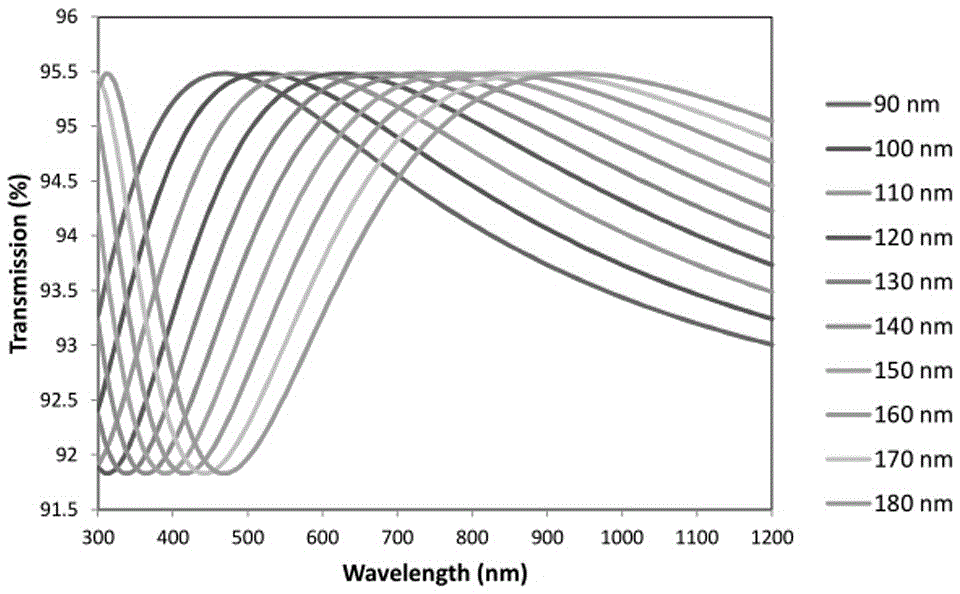A Method for Optimizing Encapsulation Loss of Photovoltaic Modules
A photovoltaic glass and solar cell module technology, applied in photovoltaic power generation, electrical components, semiconductor devices, etc., can solve problems such as difference in antireflection rate and difference in spectral response characteristics, and achieve the effect of small packaging loss and reduced packaging loss.
- Summary
- Abstract
- Description
- Claims
- Application Information
AI Technical Summary
Problems solved by technology
Method used
Image
Examples
Embodiment Construction
[0017] Below in conjunction with accompanying drawing, further illustrate the utility model.
[0018] As shown in the accompanying drawings, a method for optimizing the encapsulation loss of solar cell modules described in the utility model, the specific steps of the method are as follows:
[0019] (a): Make photovoltaic glass with different anti-reflection coating thicknesses, take 10-50nm as the thickness tolerance of the coating layer, and test the optical transmittance Tran(λ) under each thickness anti-reflection coating scheme through the transmittance testing equipment ), and establish a relationship scale between the thickness of the anti-reflection film and the transmittance;
[0020] (b): Measure the quantum efficiency of the tested solar cell by the photovoltaic cell quantum efficiency testing equipment, and obtain the spectral response distribution SR(λ) of the tested solar cell according to the fixed proportional relationship between the spectral response and the e...
PUM
 Login to View More
Login to View More Abstract
Description
Claims
Application Information
 Login to View More
Login to View More - R&D
- Intellectual Property
- Life Sciences
- Materials
- Tech Scout
- Unparalleled Data Quality
- Higher Quality Content
- 60% Fewer Hallucinations
Browse by: Latest US Patents, China's latest patents, Technical Efficacy Thesaurus, Application Domain, Technology Topic, Popular Technical Reports.
© 2025 PatSnap. All rights reserved.Legal|Privacy policy|Modern Slavery Act Transparency Statement|Sitemap|About US| Contact US: help@patsnap.com



